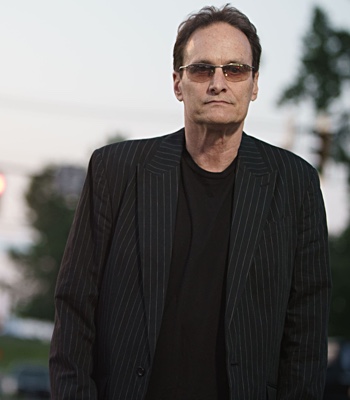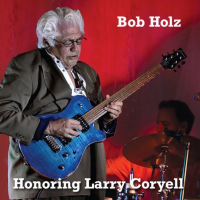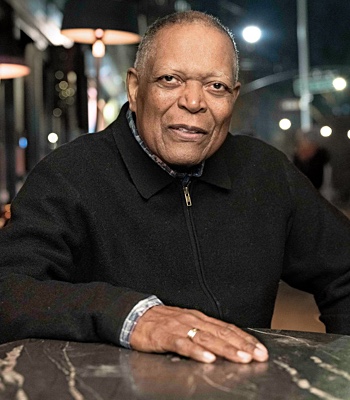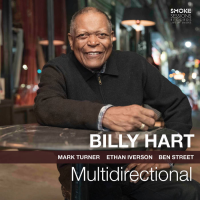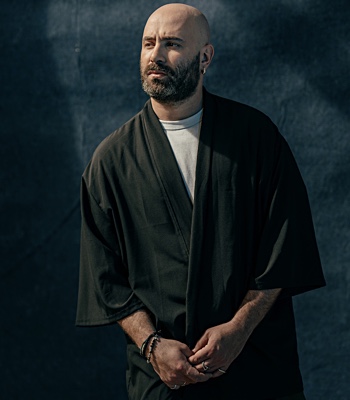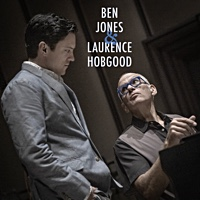Home » History of Jazz Timeline: 1959
History of Jazz Timeline: 1959
George Russell's Lydian Chromatic Concept is written about use of the modes in Jazz. This is probably the first important text on Jazz theory. Modal Jazz will soon emerge in full force.
 AAJ Building a Jazz Library: Masterpieces
Miles Davis - Kind of Blue
The best-selling jazz recording of the era (and a perfect introduction for the jazz newbie), Kind of Blue helped introduce a new sound for jazz. Working from relatively simple structures, the musicians here lay out wonderfully lyrical extended improvisations. Generally considered the best Jazz album ever and still sells 5,000 copies a week.
AAJ Building a Jazz Library: Masterpieces
Miles Davis - Kind of Blue
The best-selling jazz recording of the era (and a perfect introduction for the jazz newbie), Kind of Blue helped introduce a new sound for jazz. Working from relatively simple structures, the musicians here lay out wonderfully lyrical extended improvisations. Generally considered the best Jazz album ever and still sells 5,000 copies a week.
Miles Davis is clubbed for loitering by police outside of Birdland. Miles was playing at Birdland at the time and had just stepped outside for a break.
In September, Coltrane plays on George Russell's big band recording New York, New York (Decca) along with some of the biggest names in jazz.
About two weeks after his work on Davis's Kind of Blue, John Coltrane records Giant Steps (Atlantic), an eloquent demonstration of his "sheets of sound" style. Along with Blue Train, this is one of his most influential early recordings.
Coltrane also records Coltrane Jazz (Atlantic), which experiments with tone polytonality. Polytonality involves playing a melody in one key over a chord sequence in another.
Coltrane discovers the soprano saxophone by accident in another musician's suitcase. He begins to explore the possibilities of this new instrument.
Influential tenor sax player Sonny Rollins takes another sabbatical from Jazz. People think that he's off inventing a new kind of Jazz. At this point in time most people believe Sonny to be as important to Jazz as Coltrane.
Ornette Coleman arrives in New York.
The Ornette Coleman Quartet's stint at the Five Spot splits the Jazz world.
Ornette Coleman records Tomorrow Is The Question in March. This album features Ornette on alto sax, Don Cherry on trumpet, Percy Heath or Red Mitchell on bass and Shelly Manne on drums and is available on OJC.
Ornette Coleman records Change Of The Century in October. This album features
Ornette on alto sax, Don Cherry on pocket trumpet, Charlie Haden on bass and Billy
Higgins on drums, and is available on Atlantic LP.
 AAJ Building a Jazz Library: Masterpieces
Ornette Coleman - The Shape of Jazz to Come
After four decades, this disc remains true to its title. Saxophonist Ornette Coleman solidified his group in 1959 to the working quartet recorded here. They broke convention and provided a major stepping stone on the road to free jazz
AAJ Building a Jazz Library: Masterpieces
Ornette Coleman - The Shape of Jazz to Come
After four decades, this disc remains true to its title. Saxophonist Ornette Coleman solidified his group in 1959 to the working quartet recorded here. They broke convention and provided a major stepping stone on the road to free jazz
Charles Mingus records Better Git It in Your Soul on the LP Mingus Ah Um.
Charles Mingus records the song Fables of Faubus on the LP Mingus Ah Um. This is a sarcastic song which criticizes Orval Faubus, the Governor of Arkansas who fought against school integration in Little Rock in 1957. Mingus is censured by Columbia for this one.
Thelonious Monk leads a large orchestra at Town Hall in February.
Bill Evans forms trio with brilliant young bassist Scott LaFaro and drummer Paul Motian. Their work can be found on the excellent Portrait In Jazz on OJC.
Wynton Kelly replaces Bill Evans in the Miles Davis group.
Trumpeter Kenny Dorham releases his debut album Quiet Kenny. He chooses nostalgic tunes for the record. His renditions do not lean toward flashy showmanship.
 AAJ Building a Jazz Library: Masterpieces
Dave Brubeck Quartet - Time Out
What was conceived by pianist Brubeck as an adventure into unusual time signatures ended up one of the most successful records in jazz history, due in large part to its beautiful melodies and the mesmerizing alto work of Paul Desmond.
AAJ Building a Jazz Library: Masterpieces
Dave Brubeck Quartet - Time Out
What was conceived by pianist Brubeck as an adventure into unusual time signatures ended up one of the most successful records in jazz history, due in large part to its beautiful melodies and the mesmerizing alto work of Paul Desmond.
Cannonball Adderley hears little-known guitarist Wes Montgomery playing with organist
Melvin Rhyne and drummer Paul Parker in a west-side Indianapolis club called the Missile
Room. Adderley is so impressed he calls Riverside producer Orin Keepnews about Wes and
convinces Keepnews to record him. The result is Montgomery's first album The Wes
Montgomery Trio, which propels him into Jazz guitar history.
Bud Powell has made some recovery. He moves to Paris and he is playing better again.
Art Farmer and Benny Golson form their Jazztet.
Saxman Jackie McLean switches from Prestige to Blue Note.
Saxophonist Archie Shepp graduates from college, moves to New York and begins playing in coffee houses there.
 Ellington contributes the film score for Otto Preminger's Anatomy of a Murder and wins
the Downbeat Critics' poll.
Ellington contributes the film score for Otto Preminger's Anatomy of a Murder and wins
the Downbeat Critics' poll.
Armstrong finishes fifth in the Music USA all-time great Jazz musician poll.
Sidney Bechet dies in Paris on May 14 - his birthday. A bust of him is erected in Juan-les-Pins.
Lester Young dies in New York City on March 15.
Billie Holiday dies in New York City on July 17.
The French Jazz group Les Double Six is formed.
Keyword Search
Disclaimer: Though we have checked our facts, this timeline may contain erroneous information. If you discover errors or omissions, please bring them to our attention.

